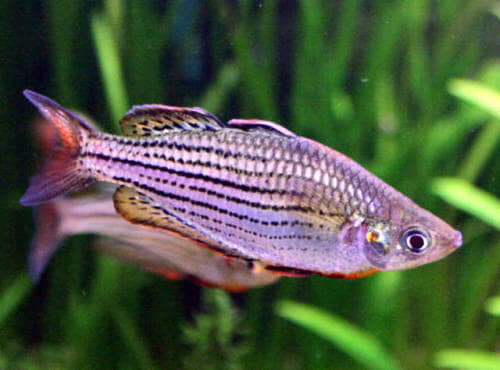
Skull Creek Rainbow
Melanotaenia sahulensis is a species of rainbowfish native to Northern Australia and Papua New Guinea. Here are some key features and information about this species:
Appearance: Melanotaenia sahulensis is known for its vibrant and striking colors. The body is typically elongated and laterally compressed, and the fins are often adorned with bright colors.
Coloration: The colors of Melanotaenia sahulensis can vary, but they often display a combination of blue, green, yellow, and red hues. Males are usually more colorful than females, especially during the breeding season.
Size: These rainbowfish can reach a size of around 4 to 5 inches (10 to 12 centimeters) in length.
Habitat: In the wild, Melanotaenia sahulensis is found in freshwater streams, rivers, and swamps in the northern regions of Australia and parts of Papua New Guinea. They prefer habitats with clear water and vegetation.
Behavior: Rainbowfish, in general, are known for their peaceful and social behavior. They are schooling fish, so keeping them in groups is recommended. This helps reduce stress and allows them to exhibit their natural behaviors.
Diet: In the aquarium, Melanotaenia sahulensis should be offered a varied diet. They are omnivorous and will accept high-quality flake food, pellets, live or frozen foods like brine shrimp and bloodworms.
Tank Requirements: Provide a well-maintained aquarium with stable water conditions. They prefer slightly alkaline to neutral water with a temperature range of 73-79°F (23-26°C). A planted aquarium with hiding spots and open swimming areas is ideal.
Breeding: Rainbowfish are egg layers, and Melanotaenia sahulensis is no exception. If you want to breed them, provide a suitable breeding setup with fine-leaved plants or a spawning mop. The adults may eat their eggs, so it's common to separate the eggs or fry to ensure their survival.
As always, it's essential to research and understand the specific needs of any fish species before keeping them in an aquarium. Conditions such as water parameters, tank size, and diet should be tailored to meet the requirements of Melanotaenia sahulensis.



